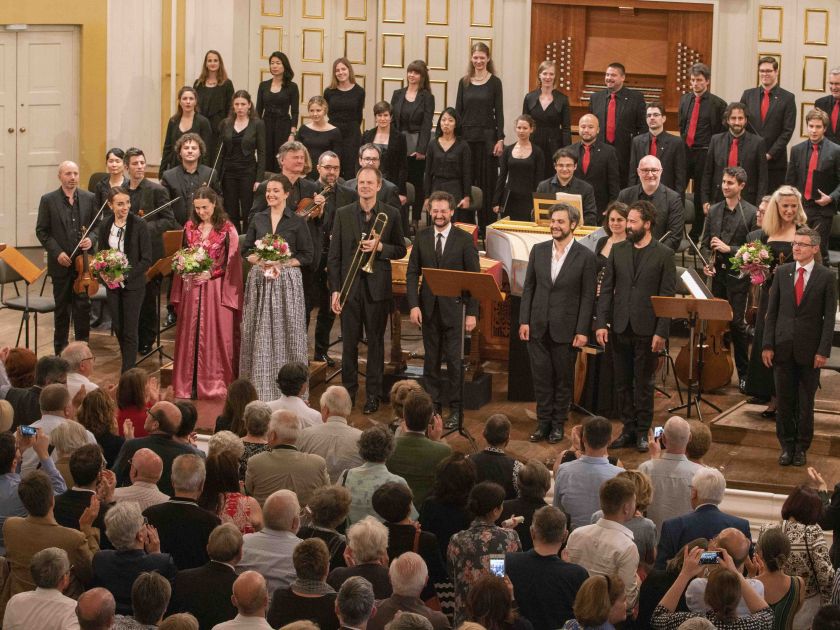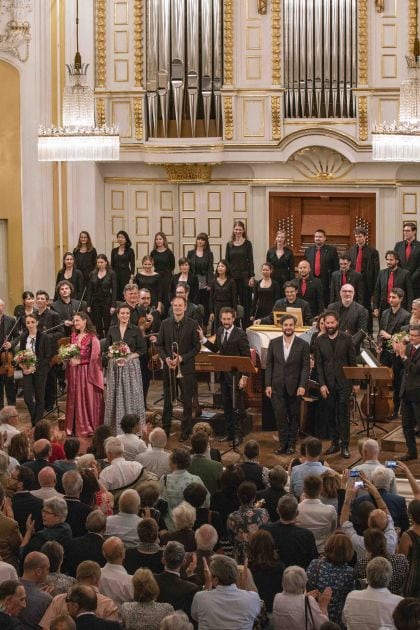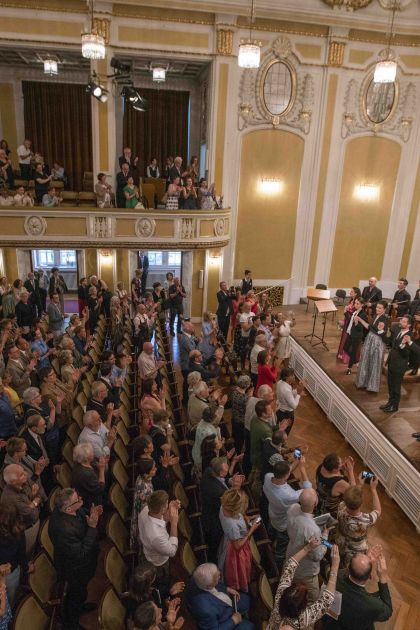Opera and oratorio: in the early and mid-18th century the boundaries between these two prestigious art forms were often fluid. The aesthetic differences between the two were limited in number, as in both cases the expectation was for virtuosic and melodious arias, vivid recitatives and snappy instrumental movements. This was no different in Vienna than in Italy, from where many composers had journeyed, finding employment and fame north of the Alps. Among them was Antonio Caldara, who from 1716 served as the ‘Vizekapellmeister’ (assistant music director) to the Habsburg court, where he was immensely productive as a composer: his output numbered around 80 operas, more than 40 oratorios and numerous sacred works. The reputation of Vienna as one of Europe’s leading musical cities was consolidated to a significant extent by Caldara.
La morte d’Abel, based on a text by the renowned Pietro Metastasio and written for the castrato Farinelli, was first heard in April 1732 at the court chapel in Vienna. The libretto follows the biblical narrative: the shepherd Abel is killed by his brother, the farmer Cain, because the latter feels less favoured in the eyes of God — and the only way he can deal with his desire for revenge is to go to the extreme. Cain must thereafter live with the heavy burden of his guilt, serving as a warning to future generations.



